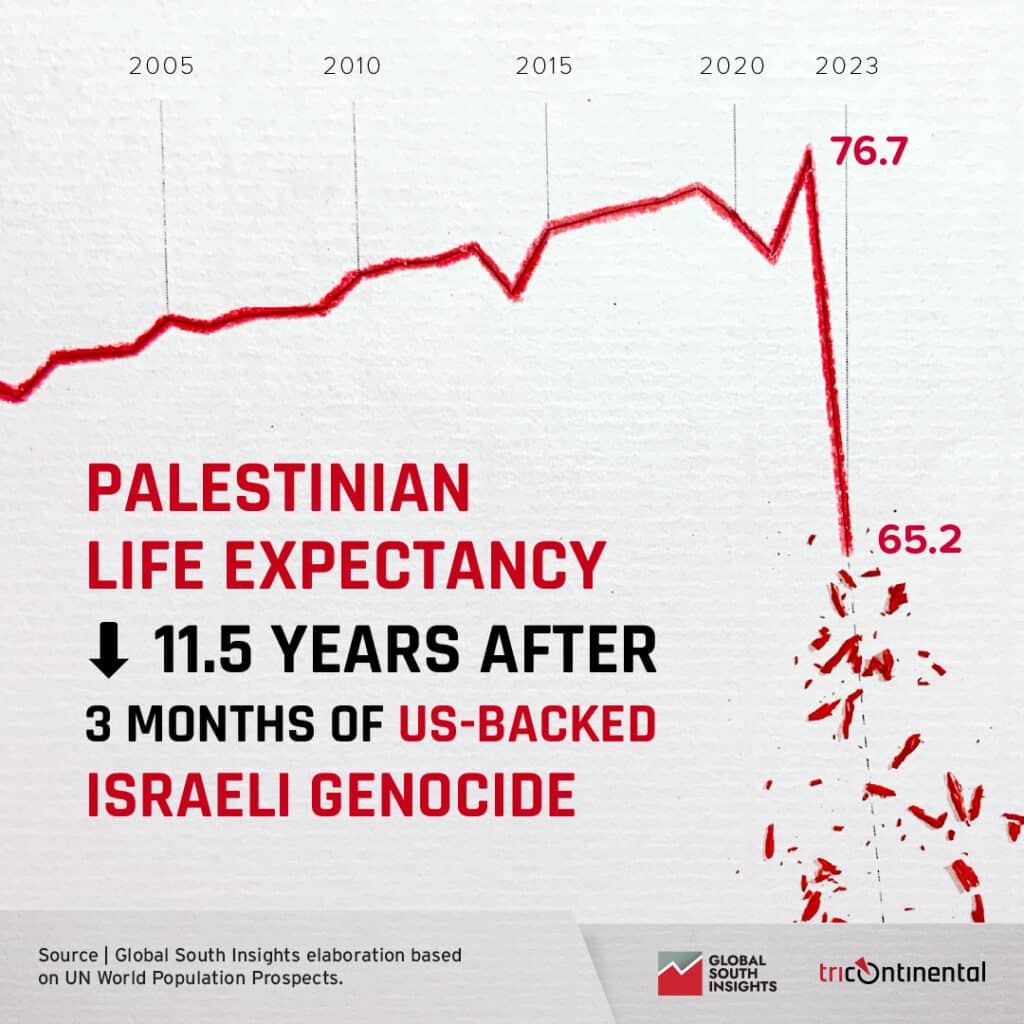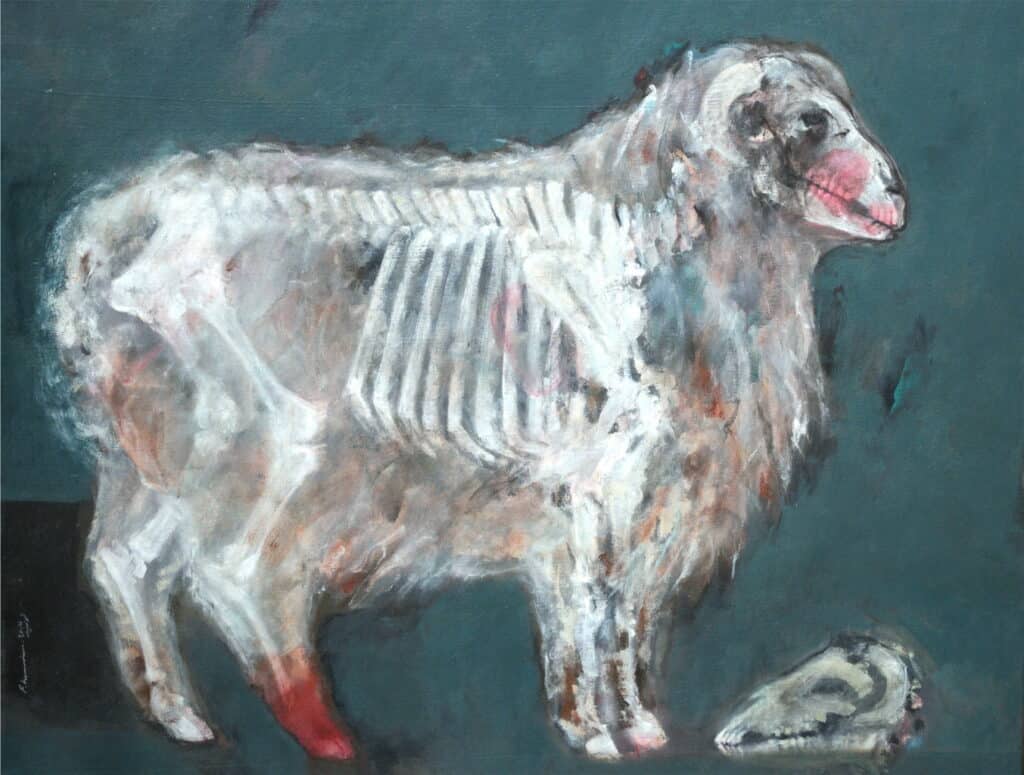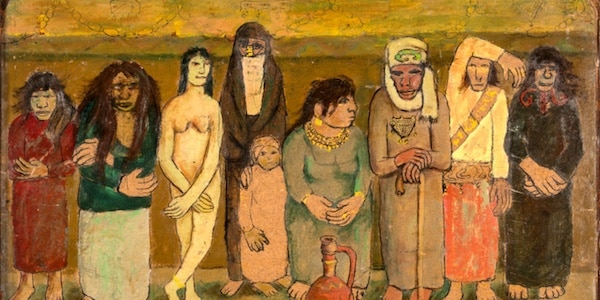Dear friends,
Greetings from the desk of Tricontinental: Institute for Social Research.
The idea of a ceasefire is as old as the idea of war. In old records, one reads of halts in firing for humans to eat or sleep. Rules of combat developed out of an understanding that both sides had to rest or refresh themselves. Sometimes, this understanding included the lives of animals. During the Easter Rising in 1916, for instance, the Irish rebels and the British troops stopped their shooting around St. Stephen’s Green in Dublin so that James Kearney, the park keeper, could enter and feed the ducks. It was this caesura, or pause, of gunfire that popularised the term ‘ceasefire’.
For Palestinians in Gaza, any ceasefire that promises to stop the bombardment and allow for the arrival of humanitarian aid (particularly food, water, medicine, and blankets) is a relief. In the days since 19 January, when a temporary ceasefire went into effect, aid at scale has been able to reach Gazans, United Nations Office for the Coordination of Humanitarian Affairs spokesperson Jens Laerke confirmed. On the first day of the ceasefire, 630 trucks entered Gaza—many more than the fifty to one hundred trucks per day that struggled to get in during the Israeli bombing. These trucks are ‘getting food in, opening bakeries, getting healthcare, restocking hospitals, repairing water networks, repairing shelter, family reunifications’, and carrying out other essential work, Laerke said. After almost five hundred days of genocidal violence, this aid is more than a relief. It is a lifeline. But this ceasefire agreement had first been tabled in May 2024, when it was approved by the Israeli government and later agreed to by Hamas until ultimately being rejected by Netanyahu. The guns could have been silenced then.

Palestine has been deeply impacted by the genocide. Using estimates from the United Nations’ World Population Prospects 2024, Tricontinental: Institute for Social Research and Global South Insights analysed the decline in Palestinian life expectancy caused by the Israeli bombardment in Gaza and found that Palestinian life expectancy at birth fell by 11.5 years between 2022 and 2023, from a respectable 76.7 years in 2022 to just 65.2 years in 2023. It was the first three months of the U.S.-backed Israeli bombing—from October to December 2023—that brought about this terrible decline in total life expectancy. We are not aware of such a rapid decline in life expectancy at any other period of modern human history. A Palestinian life is now more than seventeen years shorter than an Israeli one. This gap is greater than that which existed between blacks and whites in apartheid South Africa, which was fifteen years in 1980.
Eleven and a half years lost per Palestinian. That is almost 60 million years lost for the remaining 5.2 million Palestinians who have remained in Palestine and survived the genocide. This loss cannot easily be recovered. It will take years of immense work to rebuild Palestinian society and reach anything near the pre-genocide life expectancy. Health systems will need to be rebuilt: not only hospitals and clinics, which were almost all destroyed in Gaza, but new doctors and nurses will have to be trained to replace those who were killed. Food systems will need to be recovered: not only bakeries, but fields will need to be detoxified and fishing boats repaired. Housing will need to be rebuilt to replace the 92% of homes in Gaza that were destroyed or damaged (what the UN has called a ‘domicide’). Schools will need to be rebuilt. The mental trauma that afflicts children will need to be healed so that they feel that these structures are not graves but places of safety and learning.

Ahmad Nawash (Palestine), The Elephant, 1989.
The data is messy. Tens of thousands of Palestinians have been killed in the carnage, including at least 14,500 children. According to a report produced by the Danish Refugee Council, the Agricultural Development Association, and the Women’s Affairs Centre, between October 2023 and October 2024 ‘over 90% of Gaza’s population has been displaced, with individuals displaced an average of six times, and some up to 19 times’. Furthermore, the report states, Palestinians have faced forced displacement orders with ‘inadequate warning’ and have struggled to survive as the ‘designated “safe zones”’ have been ‘subjected to bombardment and lack basic resources’. The neurological problems faced by survivors are extreme. ‘There is ongoing concern for the mental health of everybody in Gaza, particularly for children who are so deeply traumatised’, Nebal Farsakh of the Palestine Red Crescent Society said, pointing out that ‘there are at least 17,000 children unaccompanied or separated from their parents’. As we noted in the first newsletter of this year, a December 2024 report conducted by the Community Training Centre for Crisis Management in Gaza found that ‘96% of the children in Gaza felt that death was imminent’.
A preliminary assessment suggests that rebuilding Gaza will cost $80 billion. The UN Development Programme has signed an agreement with the Università Iuav di Venezia to design a new Gaza that proposes first building a city ‘nucleus’ for 50,000 people amidst the rubble and then building outwards. There are at least 50 million tons of rubble in Gaza from the destruction of more than two-thirds of the area’s infrastructure (including 92% of housing units), which will take years to clear. In the ruins, alongside the bodies of missing Palestinians, are unexploded munitions and toxic materials: it is not possible to just line up a row of bulldozers and drive from one end of the Gaza Strip to the other.

Fadi al-Hamwi (Syria), Gloating, 2013.
Palestinian institutions simply do not have the money to rebuild Gaza. The Gulf Arab states, which do have the money, will certainly try to wrest unforgiveable political concessions from the Palestinian political factions in exchange for any aid. The countries that want to make Israel pay for the devastation it has wrought on the Palestinians do not have the political leverage to do so, nor can they hope to push the countries that armed Israel (such as the United States, the United Kingdom, and Germany) to pay for the damage done with their munitions.
The perpetrators of the genocide want to convert Gaza into their real estate playground. U.S. President Donald Trump says Gaza is a ‘phenomenal location’ that currently looks like a ‘massive demolition site’, echoing his son-in-law and advisor on Middle East strategy Jared Kushner’s assessment in February 2024 that Gaza’s ‘waterfront property could be very valuable’. Last year, Israeli Prime Minister Benjamin Netanyahu said that the northern part of Gaza, including Gaza City, would remain a ruin and be annexed, while Israel would control the rest of Gaza and build settlements along its edges. The settler movement, which is hell-bent on ethnically cleansing the Palestinians—and part of Netanyahu’s base—is prepared to seize the beachfronts and build their own settlements there. The pressure on Palestinians to leave Gaza will remain intense, despite this momentary ceasefire.

Dima Hajjar (Lebanon), Olympia Network, c. 2002—2004.
Palestinians, who have lost at least 11.5 years of their lives as a result of this horror, will take what they can get now—even this threadbare ceasefire. But they deserve much more, and they will continue their struggle to get it.
That is why on 27 January, hundreds of thousands of Palestinians sheltering across Gaza began marching northward to their homes. They will not live through another Nakba (Catastrophe). They will rebuild with their fingers in the dirt if necessary.
Warmly,
Vijay
P. S. The graph above is part of a new series from Tricontinental: Institute for Social Research and Global South Insights (GSI) called Facts. Each month, we will release a new visual from this series based on research produced by GSI’s big data system.

